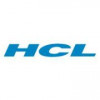Datastage Developer
10+ Datastage Developer Interview Questions and Answers

Asked in IBM

Q. You have 6+ years of experience in SQL and SSIS, but only 3+ years in Datastage. Given that your salary expectations are high for a Datastage developer with your experience, we may need to pause the interview p...
read moreMy experience in SQL and SSIS has prepared me well for Datastage development. I am confident in my ability to quickly learn and excel in this role.
My experience in SQL and SSIS has given me a strong foundation in data integration and ETL processes.
I have already demonstrated my ability to learn quickly and adapt to new technologies, as evidenced by my success in my current role.
I am eager to expand my skillset and take on new challenges in Datastage development.
I am open to d...read more

Asked in HCLTech

Q. Can you send an attachment in DataStage? If yes, how?
Yes, you can send attachments in DataStage using email notifications or external scripts.
Use the DataStage job properties to configure email notifications.
Utilize the 'Email' stage to send emails with attachments.
Integrate with external scripts (e.g., Python, Shell) to handle file attachments.
Example: In the Email stage, specify the attachment path in the 'Attachments' field.

Asked in HCLTech

Q. How can you retrieve rejected records without using lookup or merge transformations?
To get reject records in DataStage, use filters and stages like Transformer to identify and separate invalid data.
Use a Transformer Stage: Implement a Transformer stage to apply conditional logic that identifies records that do not meet specific criteria.
Filter Stage: Utilize a Filter stage to exclude valid records based on defined conditions, allowing only reject records to pass through.
Stage Variables: Create stage variables to track and categorize records as valid or rejec...read more

Asked in CompuCom

Q. What is etl and it works, architecture, connectivity
ETL stands for Extract, Transform, Load. It is a process of extracting data from various sources, transforming it, and loading it into a target database or data warehouse.
ETL is used to integrate data from multiple sources into a single, consistent format.
The Extract phase involves retrieving data from source systems such as databases, files, or APIs.
The Transform phase involves cleaning, filtering, and manipulating the extracted data to meet the requirements of the target sy...read more

Asked in HCL Group

Q. What are the key differences between DataStage and Informatica?
Data Stage is an ETL tool by IBM, while Informatica is a popular ETL tool by Informatica Corporation.
Data Stage is developed by IBM, while Informatica is developed by Informatica Corporation.
Data Stage is known for its parallel processing capabilities, while Informatica is known for its ease of use and flexibility.
Data Stage has a graphical interface for designing jobs, while Informatica uses a more traditional workflow approach.
Data Stage is often used in large enterprises w...read more

Asked in HCLTech

Q. What is the difference between a fact table and a dimension table?
Fact table contains quantitative data and measures, while dimension table contains descriptive attributes.
Fact table contains numerical data that can be aggregated (e.g. sales revenue, quantity sold)
Dimension table contains descriptive attributes for analysis (e.g. product name, customer details)
Fact table is typically normalized, while dimension table is denormalized for faster queries
Fact table is usually larger in size compared to dimension table
Datastage Developer Jobs




Asked in Amazon

Q. Are you able to sign a bond?
Yes, I am able to sign a bond, understanding its implications and responsibilities.
Signing a bond indicates commitment to the organization and its projects.
It often involves a financial obligation if the terms are not met.
For example, if I leave the company before a specified period, I may need to repay training costs.
I understand the importance of fulfilling my role and contributing to the team's success.

Asked in Cognizant

Q. How do you remove duplicates using DataStage?
Use Datastage to remove duplicates from a dataset
Use a Remove Duplicates stage in Datastage to eliminate duplicate records
Configure the Remove Duplicates stage to identify and remove duplicates based on specific key columns
Ensure that the dataset is sorted properly before applying the Remove Duplicates stage
Share interview questions and help millions of jobseekers 🌟


Asked in HCLTech

Q. Write a sed command to display the line before the last line of a file.
Use sed command to display the line before a specific pattern
Use 'sed -n '/pattern/{g;1!p;};h' file.txt' to display the line before the pattern
Replace 'pattern' with the specific pattern you are looking for
This command will display the line before the pattern in the file

Asked in YouGov

Q. What is a data warehouse?
A data warehouse is a centralized repository that stores structured and unstructured data from various sources for analysis and reporting.
Data warehouses are used for decision-making and business intelligence purposes.
They typically involve extracting, transforming, and loading data from different sources into a single, unified database.
Data warehouses often use dimensional modeling and OLAP (Online Analytical Processing) techniques.
Examples of data warehouse tools include Sn...read more
Asked in Mep Media

Q. What are facts and dimensions?
Facts are measurable data points, while dimensions provide context to the facts.
Facts are quantitative data that can be measured or counted.
Dimensions are qualitative data that provide context to the facts.
Examples: In a sales database, sales amount is a fact, while product category is a dimension.

Asked in HCLTech

Q. What is the difference between join and lookup?
Join is used to combine rows from two or more tables based on a related column, while lookup is used to retrieve data from a reference table based on a matching key.
Join combines rows from multiple tables based on a related column
Lookup retrieves data from a reference table based on a matching key
Join can result in duplicate rows if there are multiple matches, while lookup returns only the first matching row
Join is used for merging data sets, while lookup is used for retrievi...read more

Asked in MRF GROUP

Q. What does "DT" stand for?
In the context of DataStage, 'DT' typically stands for 'Data Transformation', a key process in ETL workflows.
Data Transformation involves converting data from one format or structure into another.
It is crucial for cleaning, aggregating, and enriching data before loading it into a target system.
Examples include changing data types, filtering records, and merging datasets.

Asked in MakeMyTrip

Q. Pyspark? Coalesce vs reparation?
Coalesce and repartition are both methods used in Pyspark for reducing the number of partitions in a DataFrame.
Coalesce is used to reduce the number of partitions without shuffling the data, while repartition involves shuffling the data to create a specified number of partitions.
Coalesce is more efficient when reducing the number of partitions, as it avoids shuffling the data unnecessarily.
Repartition is useful when you need to increase the number of partitions or redistribut...read more

Asked in Wipro

Q. What is a database?
A database is an organized collection of structured information or data, typically stored electronically in a computer system.
Databases can be relational (e.g., MySQL, PostgreSQL) or non-relational (e.g., MongoDB, Cassandra).
They use a structured query language (SQL) for managing and manipulating data.
Databases support data integrity, security, and concurrent access by multiple users.
Examples include customer databases for businesses, medical records databases in healthcare, ...read more

Asked in CompuCom

Q. Join inner outer functions
Join inner outer functions are used in Datastage to combine data from multiple sources based on a common key.
Join function is used to combine rows from two or more tables based on a common key.
Inner join returns only the matching rows from both tables.
Outer join returns all the rows from both tables, including unmatched rows.
Examples: INNER JOIN, LEFT OUTER JOIN, RIGHT OUTER JOIN, FULL OUTER JOIN.

Asked in Cognizant

Q. Explain the transformer stage.
Transformer stage is a Datastage stage used for data transformation and manipulation.
Transformer stage is used to perform complex data transformations and manipulations.
It allows users to define custom logic using graphical mapping.
It supports various functions and operators for data manipulation.
Transformer stage can be used to filter, aggregate, join, and sort data.
It can also be used to perform calculations, conversions, and lookups.
Example: Transforming raw data into a st...read more

Asked in American Automobile Association

Q. promise define kro
KRO stands for Key Range Optimization in Datastage, used to optimize the performance of jobs by reducing the number of rows processed.
KRO is a feature in Datastage that helps in optimizing job performance by limiting the range of keys processed.
It is used to reduce the number of rows processed by specifying a key range to be processed.
By using KRO, unnecessary rows are filtered out early in the job execution process, improving overall performance.
Example: Using KRO to process...read more

Asked in American Automobile Association

Q. Tell me about your hobbies.
My hobby is photography.
I enjoy capturing moments and creating visual stories through my camera lens.
I love experimenting with different lighting, angles, and compositions to create unique and artistic photos.
I often participate in photography contests and exhibitions to showcase my work.
I also enjoy editing and post-processing my photos to enhance their visual appeal.
Interview Experiences of Popular Companies








Reviews
Interviews
Salaries
Users

















